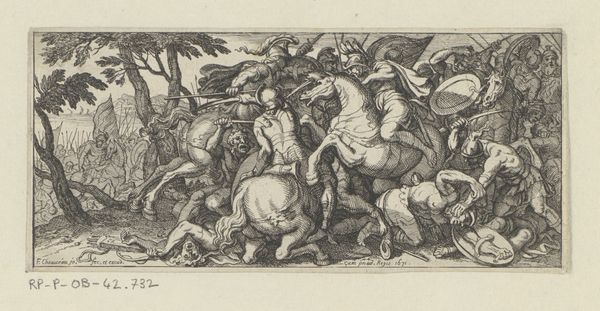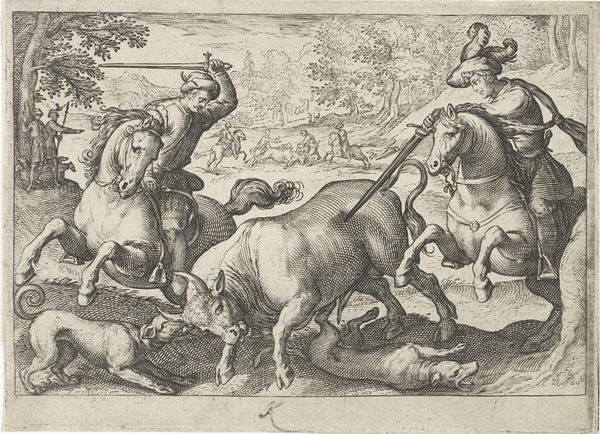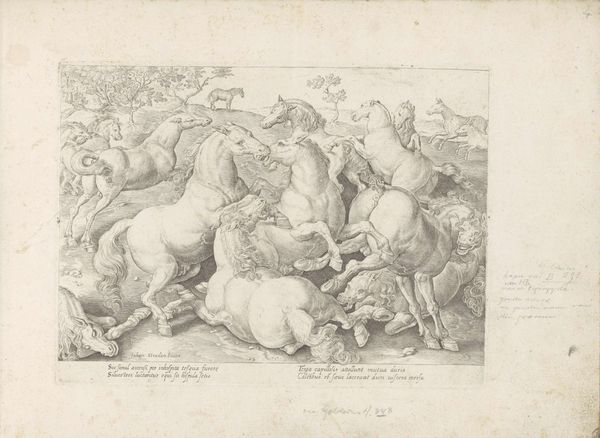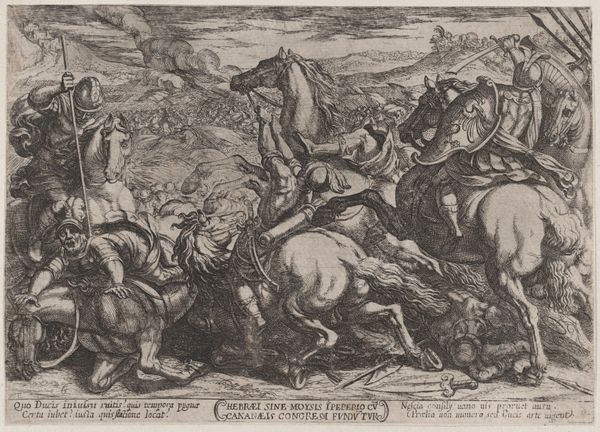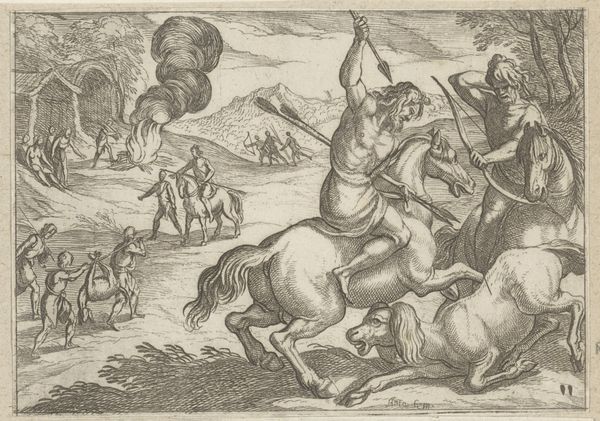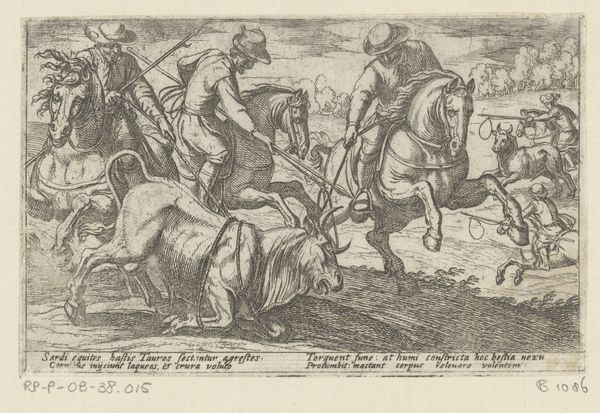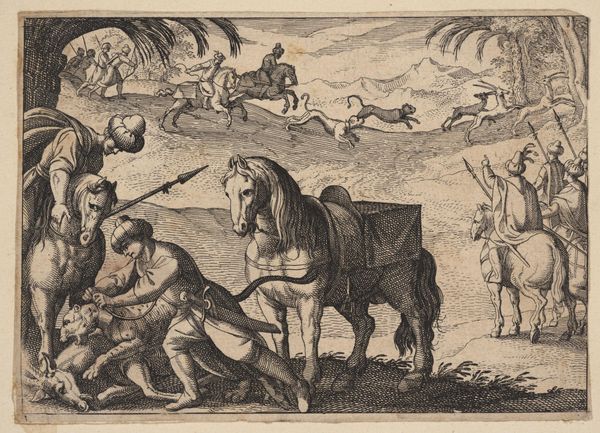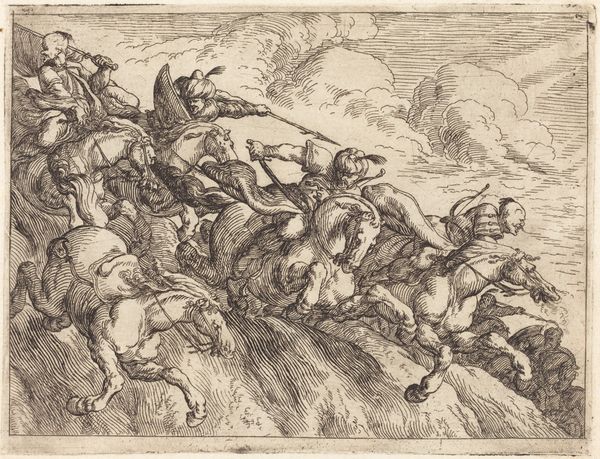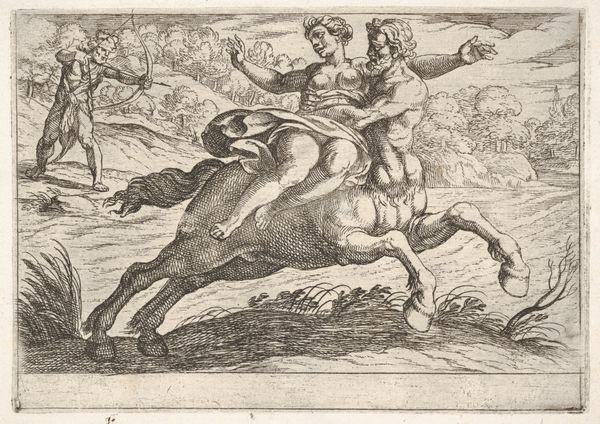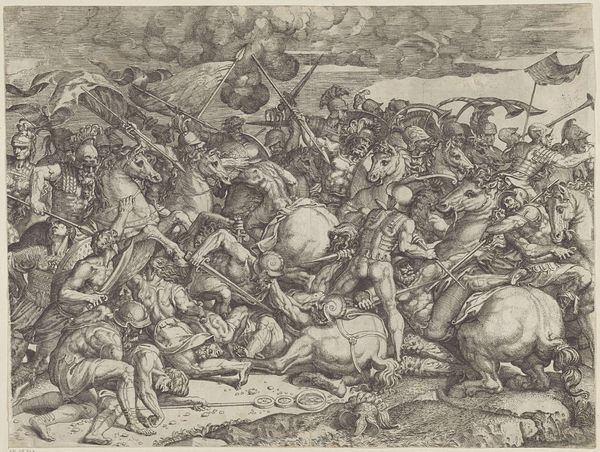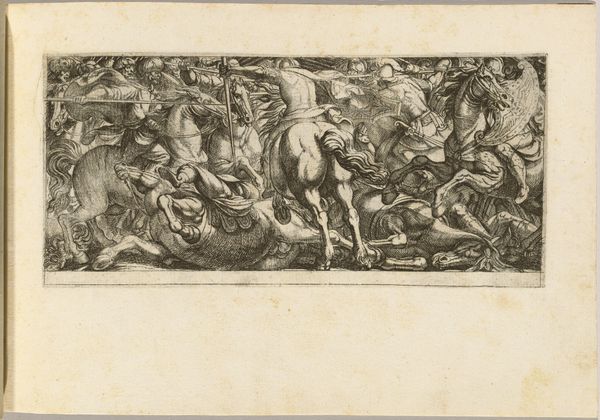
engraving
#
animal
#
figuration
#
horse
#
line
#
history-painting
#
northern-renaissance
#
engraving
Dimensions: height 204 mm, width 285 mm
Copyright: Rijks Museum: Open Domain
Curator: Hendrick Goltzius takes center stage with his engraving "Twaalf vechtende paarden," created between 1577 and 1581, now residing here at the Rijksmuseum. What's your immediate reaction to this scene of equine chaos? Editor: What strikes me first is the sheer dynamism, the palpable tension rendered solely through line. It’s as though Goltzius captured a frozen moment of absolute fury, the whole scene ready to burst forth with life. Curator: Indeed, the density of those engraved lines creates a vibrant texture, a furious energy. The way they model the musculature is incredibly evocative. And the scale amplifies it; these horses practically spill out of the frame! But beyond the frenzy, I wonder what the piece whispers about conflict itself. Editor: I think you are right. Look closely at the way Goltzius orchestrates the composition: there's a circularity, a vortex of bodies locked in perpetual combat, where dominance seems forever unattainable. This engraving isn't merely about representing twelve fighting horses; it's a complex system of forms communicating internal struggles and conflict's inescapable loop. Curator: Almost like he's trapped these beasts—and, metaphorically, ourselves—within an unending struggle. And considering its creation during a tumultuous time, the Northern Renaissance… the war of ideals, beliefs...you see it reflected, right? Editor: It absolutely serves as an emblem of societal discord rendered through pure, distilled form. He pushes the very boundaries of the medium, right? Think about how the strategic use of light and shadow heightens that very tension… Curator: Well, it is an intricate choreography of line and form... Editor: So it seems! Every time I look, there's something new—or old— to glean. Curator: Quite. An image wrought from an exploration of primal urges through form, leaving much to think about beyond just a group of brawling horses.
Comments
No comments
Be the first to comment and join the conversation on the ultimate creative platform.
